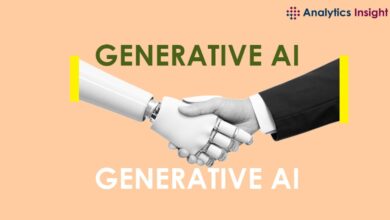Generative AI Offers Major Benefits for Independent Workers

In the ever-evolving landscape of work, the emergence of generative AI has sparked both curiosity and concern among professionals. Yet, for independent knowledge workers who navigate the complexities of high-end tasks daily, this technological advancement offers a unique set of opportunities and challenges. My conversation with Miles Everson, CEO of MBO Partners, sheds light on the nuanced impact of generative AI on this distinct segment of the workforce.
The Surprising Optimism Among Independent Workers
Everson’s insights begin with an optimistic note: a significant majority of independent workers do not see their jobs being replaced by generative AI in the near future. In fact, only 8% of independent workers surveyed by MBO Partners anticipate their roles might be at risk within the next five years—a stark contrast to the 13% in the broader full-time workforce.
This optimism, as Everson explains, stems from the specific nature of tasks performed by high-end independent workers—tasks that often involve complex decision-making with unstructured data, areas where AI has yet to fully excel. These workers are involved in dynamic environments where judgment and adaptability play critical roles—qualities that AI, for all its advances, cannot completely replicate. The nuanced understanding of their professional landscape helps these workers view AI not as a threat, but as a potential tool to enhance their own capabilities.
The Strategic Use of Generative AI
Beyond the fear of obsolescence, there is a proactive engagement with AI among independent workers. According to Everson, 37% of independent professionals are already integrating generative AI into their daily tasks. This is not about replacing human intellect but augmenting it to handle more routine aspects of their roles, thereby elevating their strategic value to clients.
This trend reflects a broader historical pattern: technological innovation, while disruptive, often creates more opportunities than it extinguishes. Everson points out that by automating the more mundane tasks, independent workers can focus on higher-value, more complex activities that require a human touch. This strategic incorporation of AI allows them to provide more sophisticated, tailored services that better meet the needs of their clients, ultimately making their offerings more competitive and indispensable in a market that increasingly values personalized and agile solutions.
Rethinking Job Structures with AI
Everson’s strategic framework for understanding AI’s impact across different job structures is insightful. He categorizes tasks based on salary ranges and complexity: structured tasks earning less than $50,000 annually, semi-structured tasks in the $50,000 to $150,000 range, and complex, high-stakes decision-making tasks at salaries over $150,000. This salary-based stratification provides a clear perspective on how AI might be applied differently depending on the complexity and value of the tasks involved.
For lower salary ranges, where tasks are more structured and repetitive, AI integration can be swift and impactful, significantly improving efficiency and reducing the need for human intervention. However, as the complexity of tasks and the salary increase, the integration of AI becomes more challenging. At the highest salary levels, where strategic and unstructured decision-making prevails, AI has yet to develop the capability to fully replicate human judgment. Here, AI is used more as a support tool, enhancing human decision-making rather than replacing it. This nuanced understanding is critical for businesses planning their long-term strategy around AI integration, ensuring that they align AI’s capabilities with the right job roles to maximize effectiveness and efficiency.
Embracing AI to Remain Competitive
Everson compellingly argues that the true challenge in the era of generative AI is not the technology itself, but the ability of companies and professionals to adapt and harness its potential. The narrative that AI will lead to widespread job elimination oversimplifies the multifaceted impact of AI in the workplace. Instead, Everson highlights the enhancement of job functions as a critical benefit of AI adoption. By integrating AI into their workflows, businesses can not only improve their operational efficiencies but also enhance their strategic capabilities, making them more competitive in a rapidly evolving market.
This approach helps secure a company’s position in the future job market, where being technologically adept and adaptable will be key determinants of success. For professionals, keeping pace with AI developments and proactively incorporating these technologies into their skill sets can turn potential threats into significant career opportunities, emphasizing the importance of a mindset geared towards continuous learning and innovation.
Generative AI as a Catalyst for Job Creation
Everson illuminates the role of generative AI in fostering job creation, grounding his argument in historical precedents that demonstrate how technological innovation often leads to expanded markets and increased demand for labor. He references the transformative impact of platforms like Uber, which not only revolutionized the transportation industry but also significantly expanded the market size from a hundred million to three hundred million dollars in just five years in San Francisco alone.
This expansion was not merely a shift but an enhancement that created more opportunities and jobs than previously existed. Everson posits that generative AI is poised to have a similar effect, particularly as it enhances customer experiences and streamlines internal processes. As businesses adopt AI to improve efficiencies, they are likely to discover new service offerings and market opportunities, which in turn could lead to the creation of new job categories. This suggests that AI, far from being a mere tool for automating existing tasks, can act as a springboard for innovation and market growth, paving the way for new kinds of employment that are today, perhaps, unimaginable.
Practical Advice for Independent Workers
In light of these evolving dynamics, Everson offers practical guidance for independent workers to adapt and thrive in an AI-enhanced market. His dual strategy emphasizes the importance of cultivating a mindset of curiosity and an active engagement with AI technologies. By directly interacting with AI tools, experimenting, and exploring their functionalities, independent workers can gain a practical understanding of how these technologies can enhance their work, streamline operations, and open up new avenues for business. This hands-on experience is invaluable, as it allows professionals to discover and innovate in ways that formal education alone cannot provide.
However, Everson also stresses the importance of complementing this experiential learning with formal training and certifications in AI applications. This more structured approach to understanding AI ensures that independent workers not only keep pace with technological advancements but also enhance their professional credentials, making them more attractive to clients and collaborators who are increasingly prioritizing technological proficiency. Together, these strategies equip independent workers with the tools necessary to navigate and capitalize on the opportunities presented by the ongoing integration of AI into the workforce.
Concluding Thoughts: A Call for Openness and Adaptability
As we concluded our interview, Everson emphasized the importance of adopting a mindset open to innovation. Viewing generative AI as an opportunity rather than a threat allows professionals to explore new possibilities and secure a competitive edge. His parting advice is clear: Embrace change, engage with new technologies, and be prepared to adapt, for this is the path to not just surviving but thriving in the evolving landscape of work. As I help companies I work with adapt to the future of work and integrate Generative AI into their activities, I will recommend they listen to this interview.
Have you read?
Most Fashionable Countries. Best Countries For Business Expats. Best Non-Native English Speaking Countries. Countries With the Largest Household Size. Best Countries For Older People To Live In.
Add CEOWORLD magazine to your Google News feed.
Follow CEOWORLD magazine headlines on: Google News, LinkedIn, Twitter, and Facebook.
Copyright 2024 The CEOWORLD magazine. All rights reserved. This material (and any extract from it) must not be copied, redistributed or placed on any website, without CEOWORLD magazine’ prior written consent. For media queries, please contact: info@ceoworld.biz



